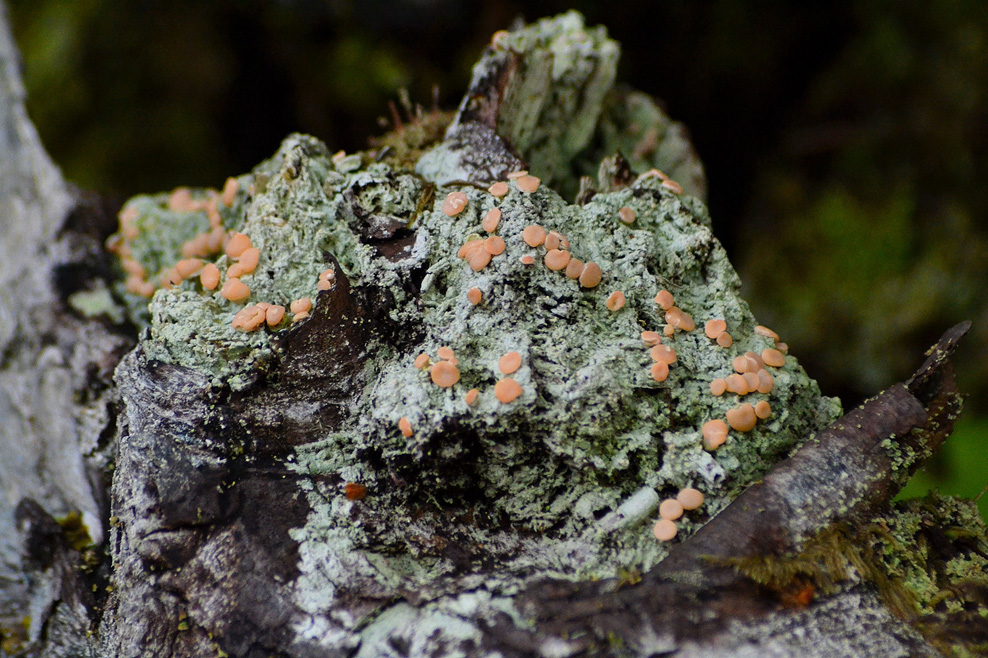Fairy barf, candy lichen • Icmadophila ericetorum
Identification
The most conspicuous part of this lichen is its pinkish to brownish disc-shaped apothecia (fruiting bodies, where spores are produced). These fruiting bodies grow out of a pale greenish-greyish granular crust (the thallus, or body of the lichen), and may grow directly on the crust or on short stalks, giving them a mushroom-like shape.
Habitat & Range
This species grows in shaded areas on rotting stumps and logs as well as peat. Its recorded range includes (but may not be limited to) North America and Europe.
Similar Species
Dibaeis baeomyces has more spherical fruiting bodies, growing on longer stalks out of a white crustose thallus.
The most conspicuous part of this lichen is its pinkish to brownish disc-shaped apothecia (fruiting bodies, where spores are produced). These fruiting bodies grow out of a pale greenish-greyish granular crust (the thallus, or body of the lichen), and may grow directly on the crust or on short stalks, giving them a mushroom-like shape.
Habitat & Range
This species grows in shaded areas on rotting stumps and logs as well as peat. Its recorded range includes (but may not be limited to) North America and Europe.
Similar Species
Dibaeis baeomyces has more spherical fruiting bodies, growing on longer stalks out of a white crustose thallus.
References
(2006). Lichens of the National Forests in Alaska. United States Department of Agriculture Forest Service Alaska Region. Accessed 29/02/2016.
Silverside, A. J. Icmadophila ericetorum (L.) Zahlbr. Lichens. LastDragon. Accessed 29/02/2016.
Authors and editors of page
Kelly Fretwell (2016).
(2006). Lichens of the National Forests in Alaska. United States Department of Agriculture Forest Service Alaska Region. Accessed 29/02/2016.
Silverside, A. J. Icmadophila ericetorum (L.) Zahlbr. Lichens. LastDragon. Accessed 29/02/2016.
Authors and editors of page
Kelly Fretwell (2016).




